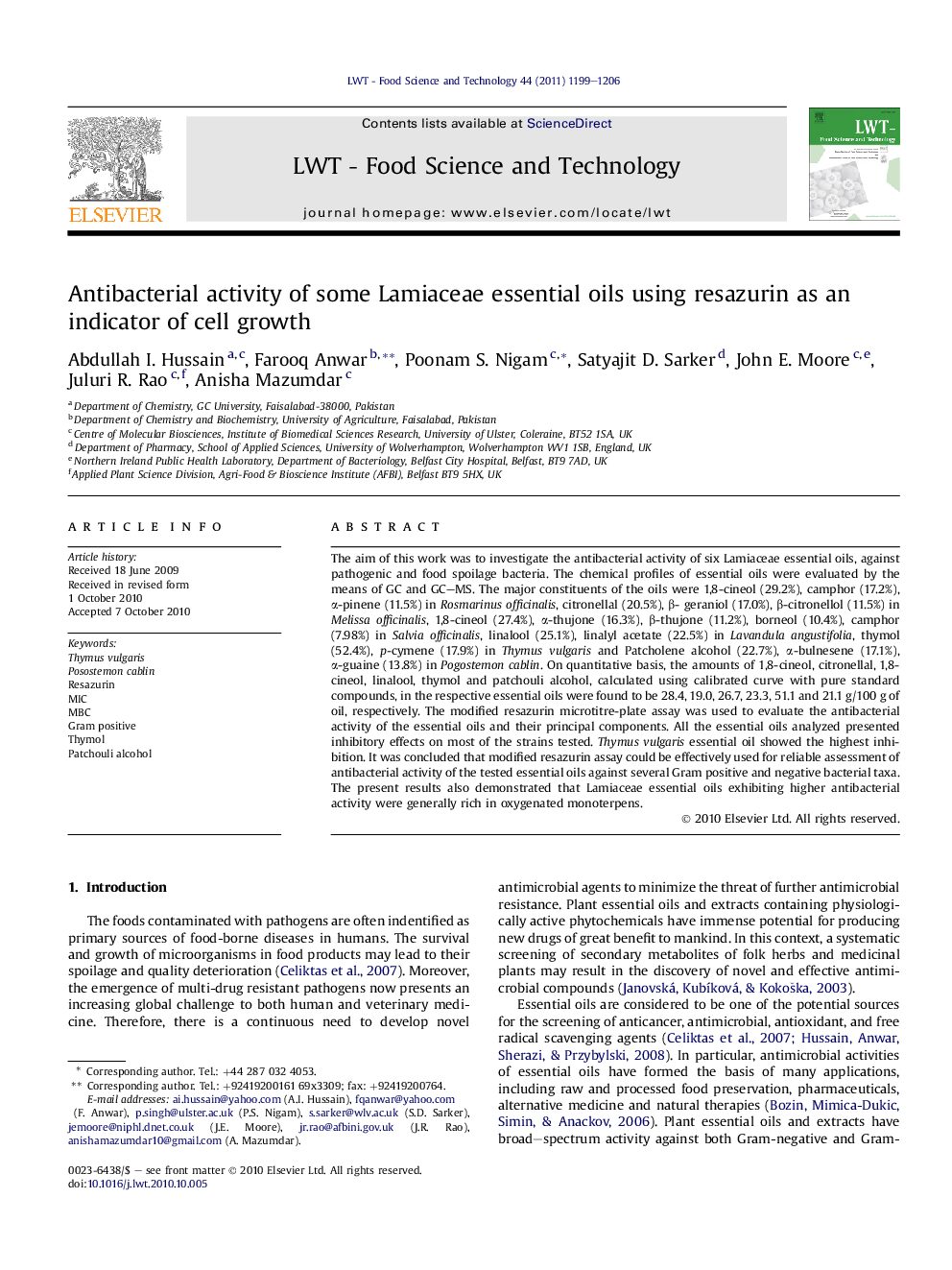| Article ID | Journal | Published Year | Pages | File Type |
|---|---|---|---|---|
| 4564381 | LWT - Food Science and Technology | 2011 | 8 Pages |
The aim of this work was to investigate the antibacterial activity of six Lamiaceae essential oils, against pathogenic and food spoilage bacteria. The chemical profiles of essential oils were evaluated by the means of GC and GC–MS. The major constituents of the oils were 1,8-cineol (29.2%), camphor (17.2%), α-pinene (11.5%) in Rosmarinus officinalis, citronellal (20.5%), β- geraniol (17.0%), β-citronellol (11.5%) in Melissa officinalis, 1,8-cineol (27.4%), α-thujone (16.3%), β-thujone (11.2%), borneol (10.4%), camphor (7.98%) in Salvia officinalis, linalool (25.1%), linalyl acetate (22.5%) in Lavandula angustifolia, thymol (52.4%), p-cymene (17.9%) in Thymus vulgaris and Patcholene alcohol (22.7%), α-bulnesene (17.1%), α-guaine (13.8%) in Pogostemon cablin. On quantitative basis, the amounts of 1,8-cineol, citronellal, 1,8-cineol, linalool, thymol and patchouli alcohol, calculated using calibrated curve with pure standard compounds, in the respective essential oils were found to be 28.4, 19.0, 26.7, 23.3, 51.1 and 21.1 g/100 g of oil, respectively. The modified resazurin microtitre-plate assay was used to evaluate the antibacterial activity of the essential oils and their principal components. All the essential oils analyzed presented inhibitory effects on most of the strains tested. Thymus vulgaris essential oil showed the highest inhibition. It was concluded that modified resazurin assay could be effectively used for reliable assessment of antibacterial activity of the tested essential oils against several Gram positive and negative bacterial taxa. The present results also demonstrated that Lamiaceae essential oils exhibiting higher antibacterial activity were generally rich in oxygenated monoterpens.
